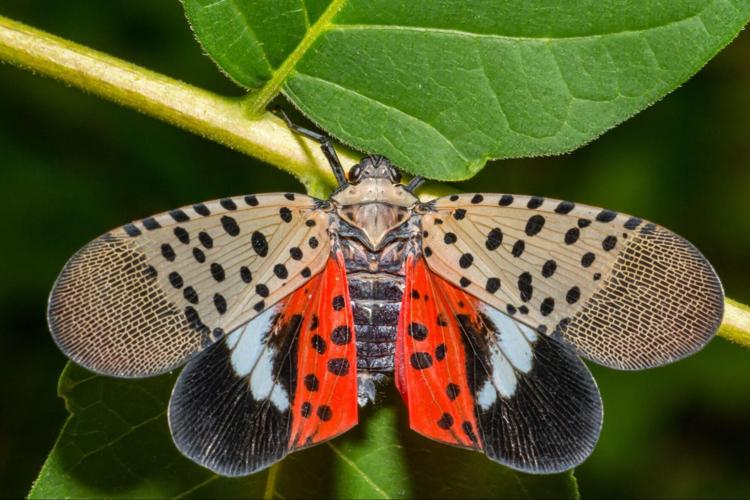
The Spotted Lanternfly can be easily identified for its bright red color and large spots
The Illinois Department of Agriculture confirmed the first detection of the invasive Spotted Lanternfly in Illinois on September 26. According to a statement from the department, state officials identified a moderate fly population following a report of a live adult on September 16.
Originally from eastern Asia, the Spotted Lanternfly has been moving closer to the Midwest since first being identified in southeastern Pennsylvania in 2014. Sightings of the fly are cropping up in other parts of the Midwest, including Indiana, Michigan, and Ohio.
As an invasive species, the pest has no native predators in the US, allowing it to multiply while damaging plant populations.
The species poses no threat to humans or animals but can cause widespread devastation to crops and native plants. Spotted Lanternflies can decimate populations of maple trees, grapes, and other plants. The pest is likely to interfere with outdoor spaces and have a negative impact on Illinois' agritourism industry, according to Illinois Department of Agriculture official Scott Shirmer.

The Spotted Lanternfly can wreak havoc on crops and native plants | Photo - Shutterstock
The pest's feeding habits produce honeydew, a sticky substance that accumulates on surrounding foliage and plant parts. Due to its tendency to move easily around different surfaces, the Spotted Lanternfly poses a containment challenge.
Illinois Department of Agriculture Director Jerry Costello II emphasized that the department and its partners have been working on readiness, educating the public and industry, and monitoring for early detection.
Prevention and early detection are crucial to limit the lanternfly's ability to move and infiltrate new areas. The public can help by reporting sightings, removing and destroying pests (nymphs, adults, and egg masses), checking vehicles and outdoor equipment for life stages, and raising awareness about the pest.
The public is also encouraged to report suspected lanternfly sightings to lanternfly@illinois.edu, including photos to aid in identification. For more information on the spotted lanternfly and how to help, visit the Illinois Department of Agriculture’s information page on the Spotted Lanternfly.









(0) comments
Welcome to the discussion.
Log In
Keep it Clean. Please avoid obscene, vulgar, lewd, racist or sexually-oriented language.
PLEASE TURN OFF YOUR CAPS LOCK.
Don't Threaten. Threats of harming another person will not be tolerated.
Be Truthful. Don't knowingly lie about anyone or anything.
Be Nice. No racism, sexism or any sort of -ism that is degrading to another person.
Be Proactive. Use the 'Report' link on each comment to let us know of abusive posts.
Share with Us. We'd love to hear eyewitness accounts, the history behind an article.